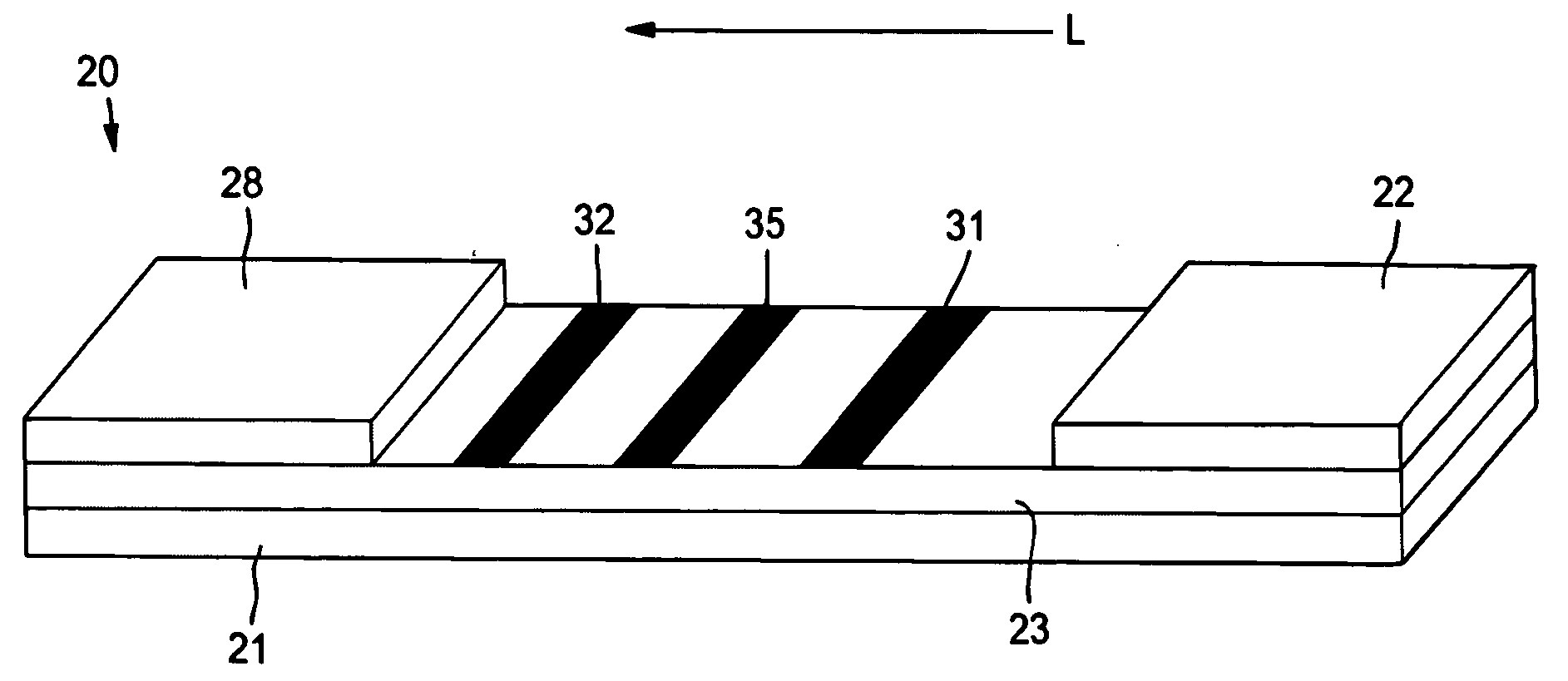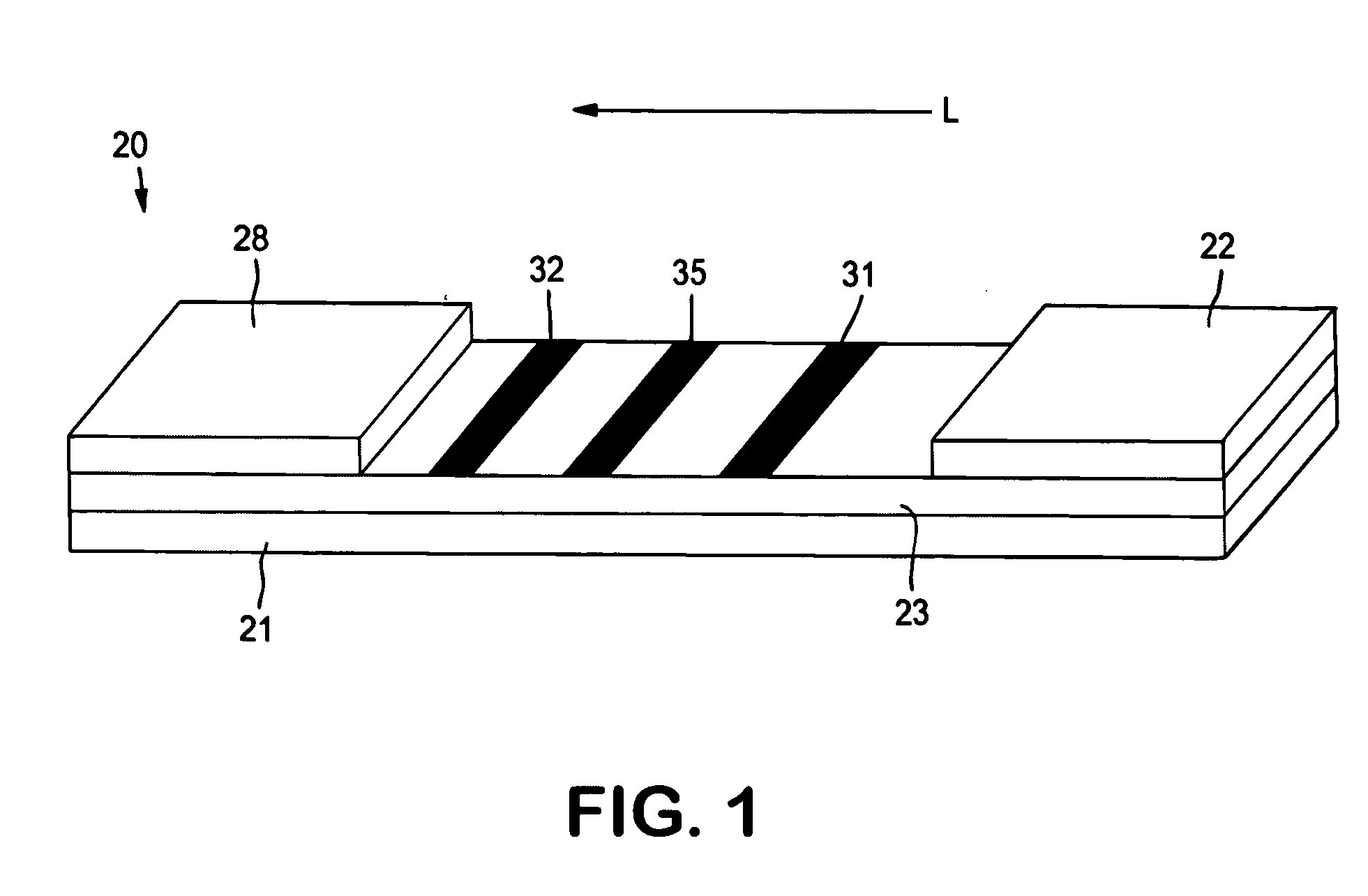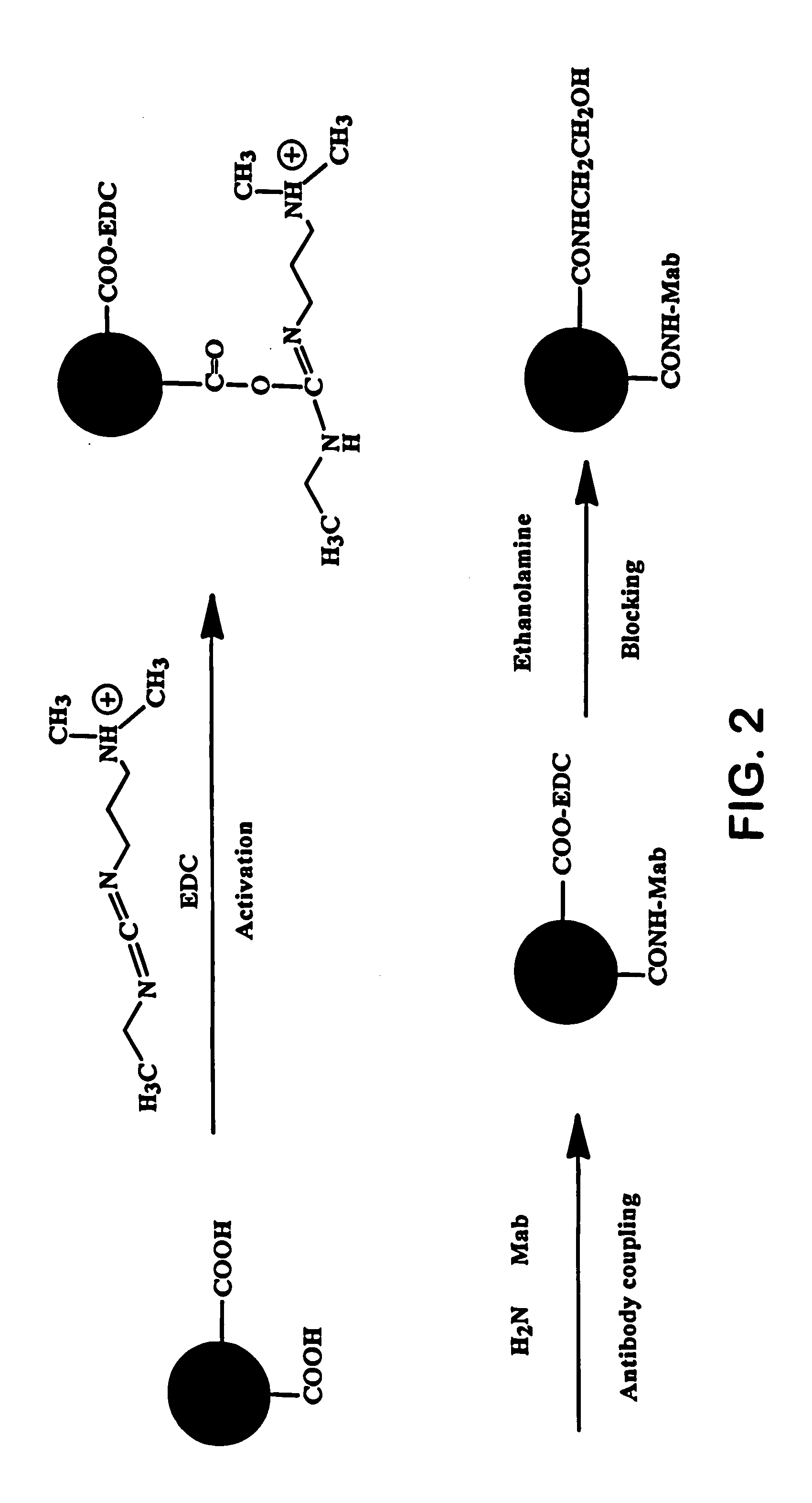Method for extending the dynamic detection range of assay devices
a dynamic detection and assay technology, applied in the field of dynamic detection range extension of assay devices, can solve the problems of inability to detect the capture of probes by most optical detection techniques, high analyte concentration, and many conventional lateral flow assays encounter significant inaccuracy, so as to achieve the effect of improving the accuracy of detection and compensation signals under actual test conditions
- Summary
- Abstract
- Description
- Claims
- Application Information
AI Technical Summary
Benefits of technology
Problems solved by technology
Method used
Image
Examples
example 1
[0064] Conjugated fluorescent detection probes were formed in the following manner. Carboxylated latex particles were encapsulated with europium chelates having a particle size of 0.20 micrometers, a 0.5% solids concentration, and exhibiting fluorescence at an emission wavelength of 615 nanometers when excited at a wavelength of 370 nanometers. The particles were obtained from Molecular Probes, Inc. and designated as “Eu—P.”
[0065] Initially, 500 microliters of the particles were washed once with 1 milliliter of a carbonate buffer and twice with 2-[N-morpholino]ethanesulfonic acid (MES) buffer (pH: 6.1, 20 millimolar) using a centrifuge. The washed particles were re-suspended in 250 microliters of MES. Thereafter, 3 milligrams of carbodiimide (Polysciences, Inc.) was dissolved in 250 microliters of MES and added to the suspended particles. The mixture was allowed to react at room temperature for 30 minutes on a shaker. The activated particles were then washed twice with a borate buff...
example 2
[0066] Conjugated fluorescent calibration probes were formed as described in Example 1, except that CRP Mab1 was replaced with Rabbit anti Goat IgG (Cat #41-RG15 from BiosPacific, Inc. Inc.) or Goat anti Rabbit IgG (Cat #41-GR30 from BiosPacific, Inc. Inc). The conjugated fluorescent calibration probes were designated as “Eu—P 41-RG15” and “Eu—P 41-GR30”, respectively.
example 3
[0067] The ability to form a lateral flow assay device with a detection zone and a compensation zone was demonstrated. A nitrocellulose porous membrane (HF 12002 from Millipore, Inc.) having a length of approximately 30 centimeters was laminated onto supporting cards. Goldline™ (a polylysine solution obtained from British Biocell International) was stripped onto the membrane to form a compensation zone. In addition, monoclonal antibody for C-reactive protein (CRP Mab2) (A#5804, available from BiosPacific, Inc., concentration of 1 milligram per milliliter) was immobilized on the porous membrane to form a detection zone. The membrane samples were then dried for 1 hour at a temperature of 37° C.
[0068] A conjugate pad was prepared as described below. 250 microliters of Eu—P CRP conjugated fluorescent detection particles of Example 1 (concentration of 2.5 milligrams per milliliter in Hepes buffer) was mixed with 375 microliters of Tween 20 (2%, available from Aldrich) and 375 microliter...
PUM
| Property | Measurement | Unit |
|---|---|---|
| Concentration | aaaaa | aaaaa |
| Electric charge | aaaaa | aaaaa |
| Ratio | aaaaa | aaaaa |
Abstract
Description
Claims
Application Information
 Login to View More
Login to View More - R&D
- Intellectual Property
- Life Sciences
- Materials
- Tech Scout
- Unparalleled Data Quality
- Higher Quality Content
- 60% Fewer Hallucinations
Browse by: Latest US Patents, China's latest patents, Technical Efficacy Thesaurus, Application Domain, Technology Topic, Popular Technical Reports.
© 2025 PatSnap. All rights reserved.Legal|Privacy policy|Modern Slavery Act Transparency Statement|Sitemap|About US| Contact US: help@patsnap.com



